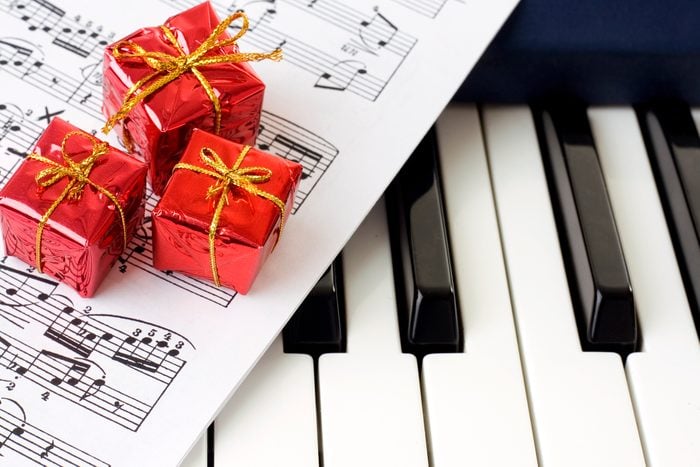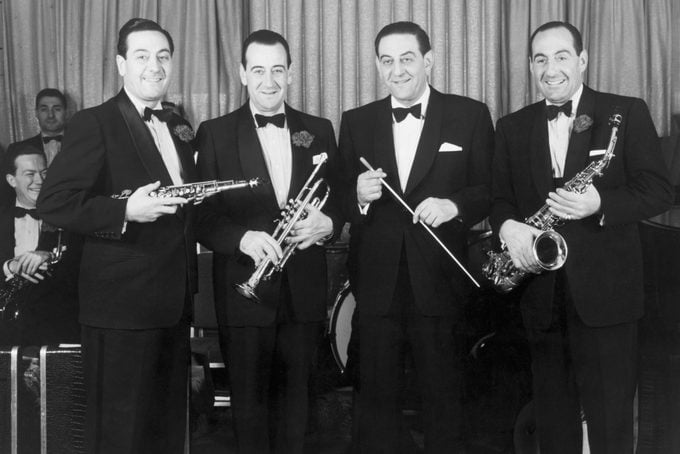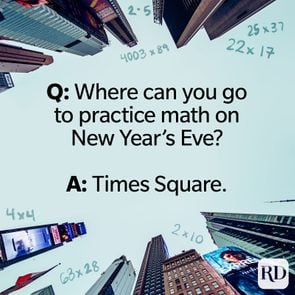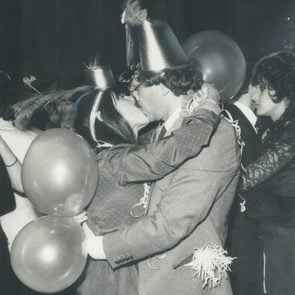What Does “Auld Lang Syne” Really Mean?
Updated: Jan. 06, 2024

Historians call it “the song that nobody knows.” And yet we’ve all tried to sing it on New Year's Eve. Here's the real "Auld Lang Syne" meaning.
There are scores of traditional Christmas songs, but New Year’s really just has one—and we’re willing to bet you don’t even know what it means. (We certainly didn’t!) Belting out “Auld Lang Syne” while watching the ball drop is a cherished New Year’s tradition. Yet most of us join in without knowing the “Auld Lang Syne” meaning, what language it is or even what it has to do with New Year’s. We’ll fill you in so you can use the saying in your New Year’s captions with confidence.
Get Reader’s Digest’s Read Up newsletter for more holiday tips, humor, cleaning, travel, tech and fun facts all week long.
What does “auld lang syne” mean?
“Auld lang syne” is the title and key phrase of a 1788 Scottish poem by Robert “Rabbie” Burns, typically sung on New Year’s Eve around the world. The phrase “auld lang syne,” which literally translates to “old long since,” basically means “days gone by” in the Scots language. Or, as Merriam-Webster explains, the “auld lang syne” meaning is “the good old times.”
What is the song “Auld Lang Syne” about?
If the “auld lang syne” meaning has to do with remembering days gone by, the song must reminisce about the good ol’ days, right? Sort of. It’s a bit boozier than that.
The original five-verse version of the poem essentially gets people singing “let’s drink to days gone by,” an appropriate toast for the new year. That’s right: Deemed by music historians to be the most famous “song that nobody knows,” “Auld Lang Syne” is a piece of the long oral tradition of getting drunk and belting out a tune. However, it can also be used as a funeral song, where it’s played at the end of a funeral service or a graduation ceremony.
Where does the term “auld lang syne” come from?
Now that you know the “Auld Lang Syne” meaning, here’s where the term is from: The nostalgic phrase “auld lang syne” appeared in Scottish song as early as 1588, but it was Burns who gave us the version we prefer to butcher every Dec. 31.
When Burns turned in the manuscript of his poem “Auld Lang Syne” in 1788, he was quick to cite the Scottish oral tradition as his muse. “The following song, an old song, of the olden times,” he’s said to have remarked, “has never been in print, nor even in manuscript until I took it down from an old man.”
Burns embellished the old ballad with a few verses of his own, mostly adding lines about drinking, like “we’ll take a cup of kindness yet” and “we’ll take a right good-will draught.” The ballad quickly became a standard for the Scottish New Year celebration of Hogmanay.
How did “Auld Lang Syne” become so popular?

As Scots immigrated around the world, they took the song with them. Eventually, North American English speakers translated Burns’s dialect into the common lyrics we know today, made famous in part by Guy Lombardo and his band, the Royal Canadians. The group performed the song on New Year’s Eve from 1929 until about 1977. It’s this version that plays every year after the ball drops in Times Square. This year, when you refill your glass with a twinkle of nostalgia in your eye, know that you’re doing exactly what Rabbie Burns would have wanted.
Rom-com enthusiasts also know the “Auld Lang Syne” meaning is a topic of conversation in the hit flick When Harry Met Sally, which features a memorable New Year’s Eve scene. Harry, baffled about the song’s meaning, says, “My whole life, I don’t know what this song means. I mean, ‘Should old acquaintance be forgot.’ Does that mean that we should forget old acquaintances? Or does it mean that if we happened to forget them, we should remember them, which is not possible because we already forgot ’em?” Sally replies, “Well, maybe it just means that … we should remember that we forgot them, or something. Anyway, it’s about old friends.”
What are the “Auld Lang Syne” lyrics?
New Year’s quotes can help you celebrate and reminisce, but there’s nothing like singing along with the crowd at midnight to get you in the holiday spirit. Knowing the “Auld Lang Syne” meaning will help you be better prepared to sing it on New Year’s. Here are the English lyrics to all five verses of Burns’s “Auld Lang Syne.”
FIRST VERSE:
Should old acquaintance be forgot,
and never brought to mind?
Should old acquaintance be forgot,
and old lang syne?
CHORUS:
For auld lang syne, my dear,
For auld lang syne,
We’ll take a cup of kindness yet,
For auld lang syne.
SECOND VERSE:
And surely you’ll buy your pint cup!
And surely I’ll buy mine!
And we’ll take a cup o’ kindness yet,
For auld lang syne.
CHORUS
THIRD VERSE:
We two have run about the slopes,
And picked the daisies fine;
But we’ve wandered many a weary foot,
Since auld lang syne.
CHORUS
FOURTH VERSE:
We two have paddled in the stream,
from morning sun till dine;
But seas between us broad have roared
since auld lang syne.
CHORUS
FIFTH VERSE:
And there’s a hand, my trusty friend!
And give me a hand o’ thine!
And we’ll take a right good-will draught,
For auld lang syne.
CHORUS
Sources:
- Robertburns.org: “‘Auld Lang Syne'”
- The Scotsman: “5 national anthem alternatives to Flower of Scotland”
- BBC: “Burns Night”
- IMDb: “Billy Crystal: Harry Burns”
- Wanderer: “‘Auld Lang Syne’ by Robert Burns”


